Introduction
Why Content Marketing Matters
In today’s digital age, content marketing has become an indispensable tool for businesses across various industries. Whether you’re a small startup or a multinational corporation, creating valuable, relevant content helps to engage your audience and build brand loyalty. But how do you know if your efforts are truly paying off? This is where measuring ROI in content marketing campaigns comes into play.
The Need for Measuring ROI in Content Marketing Campaigns
Understanding the return on investment (ROI) of your content marketing efforts is not just a nice to have—it’s essential for the long-term sustainability of your campaigns. In the fiercely competitive online marketplace, knowing the ROI helps you allocate resources wisely, fine-tune your strategies, and, most importantly, justify the marketing spend to stakeholders. By not measuring ROI in content marketing campaigns, you’re essentially shooting in the dark, hoping for the best but with no concrete evidence of success or areas for improvement.
What to Expect from This Blog Post
This blog post aims to serve as a comprehensive guide for measuring ROI in content marketing campaigns. We’ll delve into the basics of ROI, discuss how to set goals, examine the various components that contribute to ROI, and offer practical steps for calculation. Additionally, we’ll tackle some of the challenges that you might face in measuring ROI and provide best practices to improve it. So if you’ve been wondering how to quantify the success of your content marketing initiatives, you’ve come to the right place.
The Basics of ROI
What is ROI?
Return on Investment, commonly known as ROI, is a financial metric that is widely used to measure the likelihood of gaining a return from an investment. It is a ratio that compares the net profit of an investment to its initial cost. While ROI is traditionally associated with financial investments, it is equally critical in evaluating the effectiveness of marketing campaigns. In the context of this article, when we discuss measuring ROI in content marketing campaigns, we are talking about understanding the financial returns relative to the cost of producing and promoting content.
Why ROI is Crucial for Content Marketing Success
Calculating and measuring ROI in content marketing campaigns is not just a numbers game; it’s an essential indicator of success or failure. A positive ROI means your content marketing is working—it’s generating more in revenue than what you are spending on it. This is crucial for not only validating your existing marketing strategies but also for planning future campaigns.
A negative ROI, on the other hand, signals a need for re-evaluation. It could mean that your content isn’t engaging enough, your distribution channels are not effective, or the goals of your campaign are not aligned with your target audience’s needs. Essentially, measuring ROI helps you make informed decisions, allocate resources more effectively, and devise more successful marketing campaigns in the future.
Setting Objectives and Goals
The Importance of SMART Goals
Before you even begin your content marketing campaign, it’s crucial to set clear objectives and goals. Using the SMART criteria—Specific, Measurable, Achievable, Relevant, and Time-bound—can provide a structured framework for your campaign’s targets. These goals are essential as they directly correlate with how you’ll be measuring ROI in content marketing campaigns.
For instance, if your specific goal is to increase website traffic by 25% within three months through your content marketing campaign, you’ll be able to use this target as a baseline when measuring ROI. If you achieve or exceed this goal and generate considerable revenue, you’ll know that your ROI is positive.
How Goals Relate to ROI
Understanding your objectives will help you determine what metrics to monitor and what tools to use, both critical elements when measuring ROI in content marketing campaigns. If your goal is to increase brand awareness, metrics like page views, time spent on your website, and social shares might be more relevant. Conversely, if your goal is to increase sales, then conversion rates and customer acquisition costs become the key metrics to look at.
Either way, setting the right goals ensures that you’re monitoring the appropriate KPIs (Key Performance Indicators), making the task of measuring ROI more streamlined and accurate. For instance, if your objective is to generate leads, then the ROI would consider the cost-per-lead and the value each lead brings to your business.
Aligning Goals with Stakeholder Expectations
It’s also critical to align your content marketing goals with stakeholder expectations. The process of setting goals and measuring ROI in content marketing campaigns should be a collaborative effort involving marketing teams, management, and even finance departments. This ensures that everyone is on the same page about what success looks like and how it will be measured, thereby making it easier to gain buy-in for your campaigns and future marketing endeavours.
Omnitas Newsletter
Sign up for our monthly newsletter to stay up-to-date on our latest blog articles, videos and events!
Thank you!
You have successfully joined our subscriber list.
The Different Components of Content Marketing ROI
Revenue
When most people think of ROI, revenue is often the first metric that comes to mind. While revenue is undoubtedly a significant factor, it’s essential to understand that it’s only one component in the complex equation of measuring ROI in content marketing campaigns. Revenue metrics may include direct sales generated from a call-to-action within a blog post, upsells to existing customers, or even the long-term value of a newly acquired customer.
Engagement
User engagement is another vital aspect to consider. Metrics like page views, bounce rate, average time spent on the page, and social shares offer invaluable insights into how well your content resonates with your audience. Though these metrics may not have a direct financial implication, high engagement often leads to increased brand loyalty and customer retention, indirectly affecting ROI.
Traffic
Web traffic is one of the initial indicators of a successful content marketing campaign. Monitoring the number of unique visitors, page views, and the average session duration can give you an idea of your campaign’s reach. Tools like Google Analytics can provide these insights and help in measuring ROI in content marketing campaigns by correlating this data with conversion rates and revenue.
Customer Retention
Keeping an existing customer is generally less expensive than acquiring a new one. Content marketing can play a significant role in customer retention by offering value through informative and engaging articles, videos, or podcasts. Metrics like customer lifetime value (CLV) and churn rate are essential in evaluating how effective your content marketing is in retaining customers.
Cost
Last but not least, calculating ROI wouldn’t be complete without considering the costs involved. This includes not just the direct costs of content creation but also costs related to content distribution, paid promotions, and even the tools used for analytics and reporting.
When measuring ROI in content marketing campaigns, taking a multi-faceted approach that considers these various components can provide a more accurate and holistic view of your campaign’s effectiveness. Each of these elements—revenue, engagement, traffic, customer retention, and cost—plays a crucial role in understanding the complete picture of your content marketing ROI.
Tools for Measuring ROI
Google Analytics
Google Analytics is the go-to tool for many marketers when it comes to assessing website performance. From tracking user behaviour to conversion rates, this platform offers a multitude of metrics that are indispensable for measuring ROI in content marketing campaigns. Specifically, you can set up goals that align with your marketing objectives and track how well you’re achieving them. For instance, you can measure the number of leads generated through a landing page tied to a specific blog post or campaign.
CRM Systems
Customer Relationship Management (CRM) systems like Salesforce, monday.com Sales CRM or HubSpot can give you deep insights into customer behaviour and sales funnel metrics. CRMs can track leads, sales, and customer interactions, helping you measure the revenue aspect when calculating ROI. Most CRMs also integrate seamlessly with other tools, making the process of measuring ROI in content marketing campaigns more cohesive and automated.
Social Media Analytics
Platforms like Facebook Insights, Twitter Analytics, and Instagram Insights provide essential data on user engagement, reach, and conversions related to your social media campaigns. If social media is a significant part of your content marketing strategy, these analytics tools are essential for measuring ROI.
monday.com (Project Management and Workflow)
Given the multiple moving parts involved in content marketing, having a project management tool can be invaluable. Besides having CRM capabilities monday.com also serves as an excellent platform for planning, executing, and tracking content marketing campaigns. Its features allow for workflow automation, real-time collaboration, and data tracking, which can all contribute to more effective ROI measurement.
These tools, when used in tandem, offer a 360-degree view of how your content marketing campaign is performing. They provide the data needed for measuring ROI in content marketing campaigns accurately, allowing you to make informed decisions and optimize for future marketing efforts.
How to Calculate ROI in Content Marketing
Step 1: Identify Your Costs
The first step in measuring ROI in content marketing campaigns is to tally up all the costs involved. This includes direct costs like content creation (writing, graphic design, video production, etc.) and distribution costs such as paid advertising or social media promotion. Don’t forget to include the costs of tools you may be using for analytics, project management, or CRM.
Step 2: Define Revenue Metrics
Next, you need to identify the revenue streams directly resulting from your content marketing efforts. This could be sales conversions, lead generations that turned into paying customers, or even customer retention metrics if that’s a primary goal for your campaign.
Step 3: Collect Data
Using the tools mentioned in the previous section, collect the necessary data that aligns with your defined revenue metrics. The goal here is to quantify the revenue generated directly from the content marketing campaign.
Step 4: Apply the ROI Formula
Once you have both the costs and revenue figures, apply the basic ROI formula:

In this context, the Net Profit would be the revenue generated from the content marketing campaign minus the costs involved.
Step 5: Interpret the Results
After calculating the ROI, you’ll end up with a percentage. A positive percentage indicates a successful campaign, meaning you’ve generated more revenue than the cost involved. A negative percentage, however, indicates an unsuccessful campaign, signalling a need for re-evaluation and adjustment.
By following these steps, you can accurately measure ROI in content marketing campaigns. It will provide you with a clear understanding of your campaign’s performance, enabling you to make data-driven decisions for future marketing initiatives.

Challenges in Measuring ROI
Attribution Models
One of the most significant challenges in measuring ROI in content marketing campaigns is the complexity of attribution models. In a multi-channel marketing environment, attributing revenue to a single piece of content can be tricky. There are various attribution models like first-touch, last-touch, and multi-touch attribution that marketers use, each with its own set of pros and cons. Deciding on an attribution model that best fits your business objectives is crucial for accurate ROI measurement.
Time Lag Between Engagement and Conversion
Content marketing often involves a long sales cycle. A user may read a blog post today but may not convert into a paying customer until several weeks or even months later. This time lag can make it challenging to accurately attribute revenue to specific content pieces, complicating the process of measuring ROI in content marketing campaigns.
Quality of Leads
Not all leads are created equal. Some may convert quickly and become high-value customers, while others may require a long nurturing process and may not yield much revenue. Differentiating between the quality of leads is essential for accurate ROI calculation but is often a challenging task.
Non-Monetary Benefits
Content marketing also brings non-monetary benefits like brand awareness, customer engagement, and loyalty. While these factors contribute to long-term revenue, they don’t have immediate, measurable financial gains, making ROI calculation more complex.
Data Accuracy
Accurate data collection is fundamental for ROI measurement. However, issues like data silos, inconsistencies in data collection methods, or lack of integration between various tools can lead to inaccurate data, thereby affecting the reliability of ROI measurement.
While there are challenges in measuring ROI in content marketing campaigns, being aware of these obstacles can help you take proactive steps to address them. It’s essential to be as comprehensive and accurate as possible in your data collection and interpretation methods to get a true sense of your campaign’s ROI.
Best Practices for Improving ROI
Prioritize High-Value Content
The Pareto Principle, or the 80/20 rule, often applies to content marketing; 80% of your revenue may come from just 20% of your content. Identifying and prioritizing this high-performing content can significantly boost your ROI. Continuous analysis is crucial for measuring ROI in content marketing campaigns so you can refine your focus and allocate resources more effectively.
A/B Testing
A/B testing allows you to experiment with different elements of your content, like headlines, images, or calls to action, to determine which versions perform better. Regularly conducting A/B tests can help you optimize your content for better performance, ultimately improving your ROI.
Leverage User-Generated Content
User-generated content (UGC) not only minimizes the burden of content creation but also often performs well in terms of engagement and conversions. Implementing UGC into your content marketing strategy can be an effective way to improve ROI.
Audience Segmentation
Tailoring your content for different audience segments can result in higher engagement and conversion rates. Utilize analytics tools to gain insights into your audience’s behaviour and preferences, and then create targeted content to meet their specific needs.
Invest in Quality Over Quantity
While it may be tempting to churn out a high volume of content, quality should never be compromised. High-quality, valuable content is more likely to engage your audience and lead to conversions, thereby improving your ROI.
Optimize for SEO
Search engine optimization is a long-term investment that can yield high returns. By ranking higher in search engine results, you increase your visibility and the potential for higher traffic and conversions, which in turn improves your ROI.
Monitor and Adjust
Measuring ROI in content marketing campaigns is not a one-time task. Continuous monitoring allows you to adjust your strategies based on performance. Always be prepared to pivot your approach if you’re not meeting your objectives.
By implementing these best practices, you can enhance the effectiveness of your content marketing campaigns, making the task of measuring ROI in content marketing campaigns a more rewarding exercise. These strategies will not only help you achieve better ROI but will also contribute to long-term business growth.
Conclusion
Measuring ROI in content marketing campaigns is an essential practice for any business looking to validate the effectiveness of its marketing efforts. While calculating ROI in content marketing is a multi-faceted endeavour involving various components such as revenue, engagement, traffic, and customer retention, it remains a critical indicator of your campaign’s success or areas for improvement.
Despite the challenges that come with ROI measurement, such as attribution complexities and data accuracy issues, understanding your ROI can provide invaluable insights into your marketing strategies. It’s not just about crunching numbers; it’s about interpreting these metrics in a way that aligns with your business objectives, thereby driving informed decision-making.
By leveraging analytics tools, optimizing your content, and continuously adjusting your strategies based on real-time data, you can improve your ROI and make your content marketing campaigns more impactful.
Remember, ROI is not just a metric but a guiding principle that can help you navigate the complexities of content marketing. By paying attention to it, you’re not just measuring success; you’re setting the foundation for it.
If you enjoyed this article, make sure to sign up for our monthly newsletter below to stay up to date on similar content!












